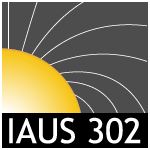Stars are born in turbulent, magnetized environments, typically as members of star clusters. They accrete most of their mass from their natal protostellar disks. Magnetic fields play important roles in star formation on different physical scales; from the fragmentation of the cluster forming gas in which a typical star begins to collapse, to the formation and fragmentation of magnetized disks, and finally to the shedding of excess angular momentum in jets and outflows of various kinds. Magnetic fields play a particularly important role in angular momentum transport on all of these scales - so strong in fact that disks may not form in ordered magnetzed collaping regions. Numerical simulations have provided an important tool for tracking the complex process of the collapse and evolution of protostellar gas because several processes are in play - turbulence, gravity, MHD, and radiation fields. Finally, new observations of magnetic structure and field strangths on these scales are helping to develop a much deeper picture of how MHD impacts star formation. The talk will focus on the role of magnetic fields in the formation of star clusters emphasizing fragmentation, disk formation, early jets and outflows, and possible solutions of the angular momentum problem for young stars as a consequence of accretion powered magnetized stellar winds.
|
|
|
|
Monday
26
Session 1 - Magnetized stellar formation
Chair: Gregg Wade › 9:45 - 10:15 (30min) The role of magnetic fields in star formation
1 : Dept. of Physics and Astronomy, McMaster University
1280 Main Street West Hamilton, Ontario L8S 4M1 -
Canada
2 : Dept. of Physics and Astronomy, McMaster University
3 : Hamburg Sternwarte, University of Hamburg
Gojenbergsweg 112 21209 Hamburg -
Germany
4 : Hamburg Sternewarte, University of Hamburg
* : Corresponding author
Gojenbergsweg 112 21209 Hamburg -
Germany
|

 PDF version
PDF version
